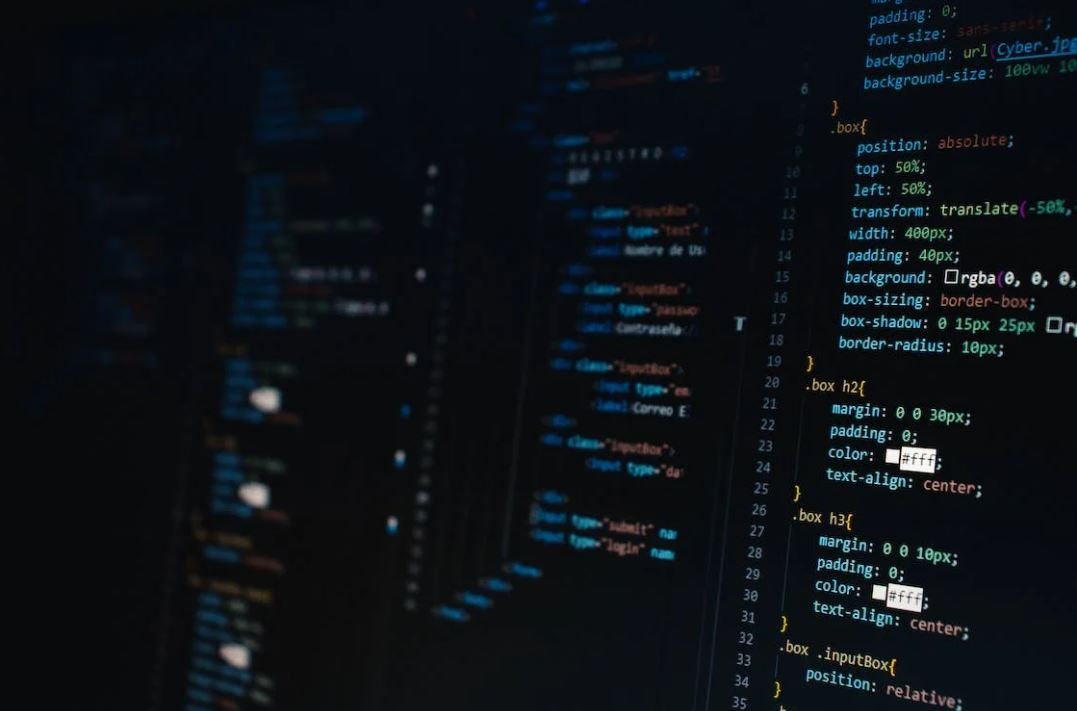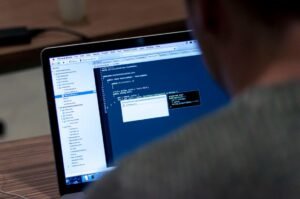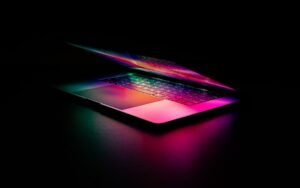How Does AI Art Work?
Artificial Intelligence (AI) has infiltrated many aspects of our lives, including the world of art. AI algorithms can now create stunning and thought-provoking artworks, blurring the line between human and machine creativity. But how does AI art actually work? Let’s delve into the fascinating intersection of technology and art.
Key Takeaways
- AI art refers to artworks created by computers using complex algorithms.
- Generative adversarial networks (GANs) are commonly used in AI art creation.
- AI artists are programmed to learn from existing art and generate new, unique pieces.
- The role of the human artist is still crucial in curating and refining AI-generated art.
AI art is created using sophisticated algorithms and neural networks. These algorithms are programmed to analyze existing artwork and learn from it. *Through this process,* AI artists can generate entirely new and unique pieces of art that have never been seen before.
One commonly used technique in AI art creation is Generative Adversarial Networks (GANs). *These networks consist of two components:* a generator and a discriminator. The generator is responsible for creating new art, while the discriminator evaluates the quality and authenticity of the generated art. *The two components work together, training each other to refine and improve the generated art over time.*
Unlike traditional art, AI art does not rely on human creativity alone. Instead, *AI artists learn from vast amounts of existing art, enabling them to create new pieces that mimic various styles and techniques.* The machine is trained to recognize patterns, understand artistic concepts, and generate its own interpretations.
The Process of Creating AI Art
- Training the AI: AI artists begin by feeding the algorithms with a vast dataset of existing artwork. This dataset can include paintings, photographs, sculptures, and more.
- Learning from the Dataset: The AI algorithms analyze the dataset and learn the various artistic styles, techniques, and patterns.
- Generating Art: Once the AI has learned from the dataset, it can generate new pieces of art based on the knowledge it has acquired.
- Refining and Curating: The human artist plays a crucial role in refining and curating the AI-generated art. They select the best pieces, make adjustments, and determine the final presentation.
- Public Showcase: The AI-generated art can be exhibited in galleries, sold online, or shared with the public through various platforms.
Interesting Data Points
| Year | Artwork | Artist |
|---|---|---|
| 2018 | Portrait of Edmond de Belamy | Obvious Art Collective |
| 2020 | The First 5000 Generated Drawings of the 2010s | Robbie Barrat |
*AI art has gained increasing recognition and popularity in recent years.* It has even been sold at auctions for significant sums of money. The blend of technology and art has captivated audiences, *raising questions about the nature of creativity and the role of machines in the art world.*
Conclusion
AI art is a rapidly evolving field that merges technology and creativity. It allows for the generation of unique and mesmerizing artworks that push the boundaries of human imagination. *As AI continues to advance, we can expect AI art to become even more sophisticated and inspiring, challenging our notions of what art truly is.*

Common Misconceptions
Misconception 1: AI Art is created entirely by machines
Many people believe that AI art is solely produced by machines, with no human involvement. However, this is not entirely true. While AI technology plays a significant role in the creation process, human artists are involved in the initial programming and training phases.
- AI art is a collaboration between humans and machines.
- Human artists provide the initial input and parameters to train the AI system.
- The AI system then generates the artwork based on the learned patterns and rules.
Misconception 2: AI Art lacks creativity and originality
Another common misconception is that AI art is devoid of creativity and originality, since it is based on algorithms and patterns. However, AI systems can produce highly creative and original art pieces that showcase unique styles and perspectives.
- AI art can provide new and innovative approaches to artistic expression.
- The algorithms used in AI systems can help artists explore new possibilities and break creative barriers.
- AI-generated art often surprises both the artists and the viewers with its experimental and boundary-pushing nature.
Misconception 3: AI Art replaces human artists
One of the fears surrounding AI art is that it will replace human artists and make them obsolete. However, AI is meant to enhance human creativity, not replace it. AI should be seen as a tool that empowers artists to explore new realms and expand their artistic capabilities.
- AI art can be seen as a valuable companion to human artists, providing new opportunities and perspectives.
- AI technology can assist artists in generating quick drafts or exploring alternative ideas.
- Human artists bring emotions, intentionality, and unique experiences that AI cannot replicate.
Misconception 4: AI Art is just random output
There is a perception that AI-generated art is nothing more than random output or a product of chance. However, AI systems are trained on vast amounts of data and complex algorithms, allowing them to generate meaningful and purposeful art.
- AI art involves complex algorithms that analyze patterns and generate art based on learned data.
- AI-generated art often reflects the aesthetics and styles present in the training data.
- While there is an element of randomness involved, the output is guided by the rules and patterns learned during training.
Misconception 5: AI Art is of lesser value than human-made art
Some people believe that AI-generated art has lesser value compared to art created by humans. However, the value of art is subjective and should be judged based on its impact, emotional resonance, and cultural significance, rather than solely on the creator.
- AI art can evoke powerful emotions and engage viewers on a deep level.
- AI-generated art can challenge existing notions of authorship and creativity, opening up new debates and discussions in the art world.
- As AI continues to advance, it may redefine our understanding of artistic expression and value.

Introduction
Artificial Intelligence (AI) has revolutionized various industries, including the world of art. AI art involves the use of algorithms and machine learning models to create original and compelling pieces of artwork. This article explores the intriguing aspects of how AI art works by presenting informative and captivating tables.
Table: Famous AI Artworks
Delve into the realm of AI art with this table showcasing some of the most famous and breathtaking AI-generated artworks.
Table: AI Art vs. Human Art
Compare and contrast the characteristics and techniques employed by AI art and human art in this illuminating table.
Table: Impact of AI Art on the Art Market
Discover the striking impact AI art has made on the traditional art market through this table, which examines sales figures and trends.
Table: AI Algorithms Used in Art Creation
Delve deeper into the technical side of AI art by exploring this table showcasing various algorithms employed in the artistic process.
Table: Benefits of AI Art for Artists
Uncover the advantages that AI art offers to artists by exploring this table, highlighting the unique opportunities it presents.
Table: Ethical Considerations in AI Art
In this thought-provoking table, examine the ethical concerns that arise in the context of AI art and its impact on society.
Table: Artistic Styles Replicated by AI
Explore the ability of AI to replicate diverse artistic styles through this captivating table showcasing different genres and techniques.
Table: AI Art Exhibitions and Awards
Discover the recognition AI art has gained by exploring this table featuring notable exhibitions and awards dedicated to AI-generated artwork.
Table: AI and Collaboration in Art
Unveil the exciting collaborations between AI systems and human artists in this table, showcasing remarkable joint artistic ventures.
Table: Future Possibilities in AI Art
Peer into the future of AI art with this engaging table, which explores potential developments and emerging trends in this field.
Conclusion
The world of AI art is a captivating intersection of technology and creativity. From replicating various artistic styles to challenging traditional art market dynamics, AI art has made its mark. Despite ethical concerns and debates, AI art continues to evolve and inspire both artists and audiences alike. As technology advances and AI algorithms become more sophisticated, the possibilities in AI art are boundless. This article has shed light on the mesmerizing workings of AI art through informative and visually appealing tables, fostering a greater understanding and appreciation for this innovative form of artistic expression.
Frequently Asked Questions
How Does AI Art Work?
How is artificial intelligence (AI) used in creating art?
AI is used in art to create computer-generated artworks by training algorithms on massive datasets. These algorithms can learn patterns, styles, and techniques from existing artworks to generate new, original pieces.
What are the main techniques used in AI art creation?
The main techniques used in AI art creation include machine learning, deep learning, neural networks, and generative adversarial networks (GANs). These techniques enable computers to learn and create art by analyzing and extrapolating from existing artistic examples.
What is machine learning in the context of AI art?
Machine learning involves training algorithms to recognize patterns and make predictions based on data. In AI art, machine learning algorithms can analyze vast amounts of artistic data to learn styles, color palettes, brush strokes, and other artistic elements, which can then be used to generate new artworks.
What is deep learning and how does it relate to AI art?
Deep learning is a subset of machine learning that focuses on training algorithms to learn multiple layers of representations from data. In AI art, deep learning algorithms can understand complex artistic features by learning from hierarchical patterns, allowing for more sophisticated generation of artwork.
How do neural networks contribute to AI art?
Neural networks are a fundamental component of AI art. By mimicking the structure and function of the human brain, neural networks can analyze and interpret artistic data, enabling the generation of new artworks based on learned patterns, styles, and aesthetics.
What is the role of generative adversarial networks (GANs) in AI art?
GANs are a class of neural networks that consist of two interconnected models: a generator and a discriminator. The generator generates new artworks, while the discriminator evaluates their quality. Through an iterative process, GANs continuously improve and refine the generated art, resulting in more realistic and visually appealing output.
Can AI art be considered as truly creative?
The debate about AI art‘s creativity is ongoing. While AI algorithms can produce visually stunning and innovative artworks, some argue that true creativity involves the ability to reflect emotions, experiences, and intentions in the artistic process, which AI may lack. However, AI can undoubtedly push the boundaries of traditional art creation and provide novel approaches to artistic expression.
What are the potential applications of AI art?
AI art has various potential applications, including assisting human artists in the artistic process, creating unique digital art pieces, generating personalized artwork based on user preferences, and exploring new artistic styles and concepts that might not have been discovered otherwise.
Can AI-generated art be protected by copyright?
The legal aspects surrounding copyright of AI-generated art are complex and depend on jurisdiction. In some cases, if a human artist provides significant creative input to the AI-generated artwork, they may claim copyright. However, if the AI algorithm generates the art entirely autonomously, it may be challenging to determine copyright ownership.
How might AI art evolve in the future?
AI art is an ever-evolving field, and its future holds vast potential. As AI algorithms continue to improve, we may witness advancements in creativity, style mimicry, and even the emergence of AI artists with unique signature styles. Additionally, AI art might collaborate with human artists more seamlessly, blurring the lines between traditional and AI-generated art.




